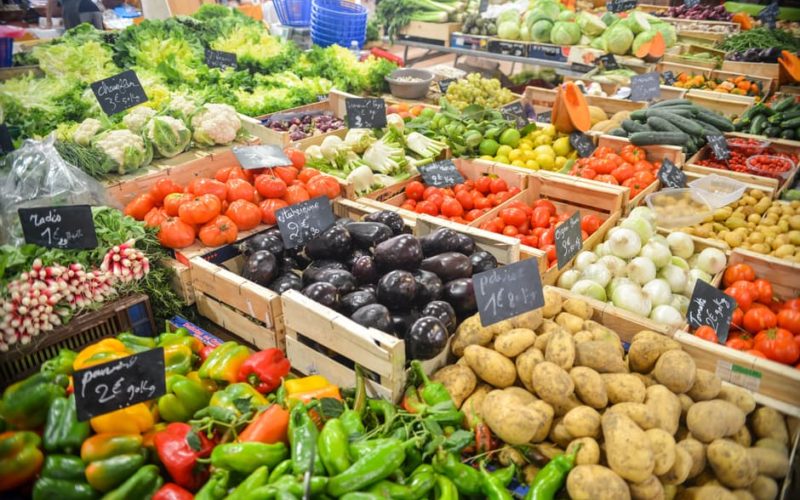
What Innovative Brands Can Learn from Amazon’s Acquisition of Whole Foods
Amazon’s plans to acquire Whole Foods Market for approximately $13.7 billion should come as no surprise to anyone who understands Jeff Bezos’ business model. In his quest to deliver the biggest and best solutions, Amazon’s CEO uses an ingenious and innovative strategy.
Rather than simply building a business model on transformation (such as online shopping), Bezos targets opportunities where transformational change and predictable consumer behavior intersect. Bezos assesses what is and isn’t going to change in the marketplace then seeks opportunities that capitalize on both.
It is with this understanding that a clear picture of the Amazon acquisition of Whole Foods can be viewed.
In the nearly $800 billion grocery business, four things won’t change anytime soon – if ever. People need to shop, they need food, they want healthy food options, and they crave convenience. These are proven facts that are no longer trends, and Bezos knows it.
What IS changing in the marketplace is that artificial intelligence (AI), drones, big data and internet technology are making it easier and more convenient for consumers to get products big and small – including groceries – within days or even hours.
To capitalize on these innovations, Amazon has worked tirelessly to develop and integrate new technologies into its business, while building a massive worldwide distribution network with hundreds of fulfillment centers across the globe. They are THE leader in efficient product distribution.
Amazon isn’t changing the way people shop. The online giant is simply delivering a superior shopping solution that aligns with the way more people want to purchase goods – conveniently.
With the Whole Foods acquisition, Amazon is taking a three-pronged approach to becoming the biggest and the best grocer for upscale shoppers.
No. 1: Capitalize on its massive distribution network.
Lowering costs is key to Whole Foods’ survival, because it no longer dominates the organic grocery business. Today, less expensive, healthy, organic foods are readily available at Wal-Mart, Sam’s Club, Costco and other grocery retailers. It’s no secret that Whole Foods has been struggling to compete.
Amazon can leverage its purchasing clout and phenomenally efficient distribution system to deliver goods to Whole Foods’ 450+ brick and mortar stores. Ultimately, this will bring groceries closer to customers faster, which will allow Amazon to reduce costs at Whole Foods and become more price competitive.
No. 2: Attack the convenience market.
If you’ve read our posts How to Reposition Your Brand to Attract Millennials and Executives: Get to Know Perennials – Your New Target Market – you know convenience plays a key role in consumer purchasing decisions today.
More consumers enjoy the ease of making purchases online and the convenience of home delivery. Sure, home grocery delivery isn’t a new concept. However, aside from Wal-Mart, no other U.S. grocer has the warehouse and distribution network; penetration of brick and mortar locations; and technological innovations that Amazon has at its disposal.
No. 3: Go after high-end customers willing to pay more for high-quality food.
Amazon, as a whole, caters to nearly every market segment. The acquisition of Whole Foods signals that Amazon the grocer has chosen to go after the most profitable segment first.
Unlike Wal-Mart, which offers a wide variety of products to price conscious shoppers, Amazon is launching its big push into the grocery business at the top of the food chain. After mastering its grocery strategy with the most profitable customers first, Amazon can work its way down to the masses.
So what should other grocery retailers do to maintain market share?
To maintain market share, other grocers should identify the unique value their brands provide to shoppers and develop a business strategy to amplify that vision. They should be cautious about going head-to-head with Amazon in the affluent market segment.
Competitors need to focus on getting to know their customers better. The key for grocers is to figure out what customers value about the grocer’s brands and why it matters to those customers. Then those grocers need to pivot their business strategy in order to do the best job at delivering that unique value to customers.
Kroger is doing a good job of targeting the mass grocery marketplace with wide product selection and affordable prices. It has also added an extensive organic food selection to its product offerings. Like other grocers, the company was able to put price pressure on Whole Foods for organic products.
Kroger also offers home delivery through online services like Instacart for shoppers who won’t pay premium prices. Since Kroger has established a good degree of brand loyalty, it should be in a good position over the long term. The company must, however, continue addressing customer convenience needs and maintain price competitiveness. If Amazon falters on product selection, Kroger will give them a run for their money.
For Target and Aldi, opportunities exist to fine tune business strategies
For brands like Target and Aldi, now is the time to tighten up market segments and be crystal clear regarding the value they provide to these segments. A “me too” strategy will not work.
Target offers a different form of convenience for shoppers than the Amazon-Whole Foods scenario. People like shopping at Target, because they can purchase food, toiletries, clothing, medication, household goods and more – all in one spot. Target needs to amplify their vision of being the best one-stop shop along with the value that solution provides.
Aldi offers customers limited options (typically only two per product category), little-known brands, small stores that are easy to navigate and low prices. The Aldi customer cares more about finding the best price and less about name brands. Aldi needs to define the unique value their brand provides – no frills, low prices, quick shopping trips – and amplify that vision.
Innovative, non-grocery brands need to amplify their visions, too
For companies outside of the grocery industry, senior executives need to take a serious look at how well prepared their organizations are to grow sales and drive ROI in the coming months and years. Why? Leading economists and wealth planners estimate that the U.S. will experience its next economic downturn in late 2017 or 2018.
Is your company well positioned to weather the next recession compared to your competitors?
Technological innovations are changing the way we all do business. Consumers – especially Millennials and Perennials – expect companies to provide innovative solutions that align with their lifestyles and social mores.
Has your company invested in technology that will enhance and simplify your customers’ lives?
Do you know who and where your best customers are and what they value about the products and services you provide?
Are you amplifying your vision and extolling your solutions through your strategic initiatives and brand messaging?
Executives: If you answered “no” to any of the questions above, let’s talk. Our team specializes in helping innovative brands amplify their visions and accelerate growth. Plus, we offer a performance guarantee.



